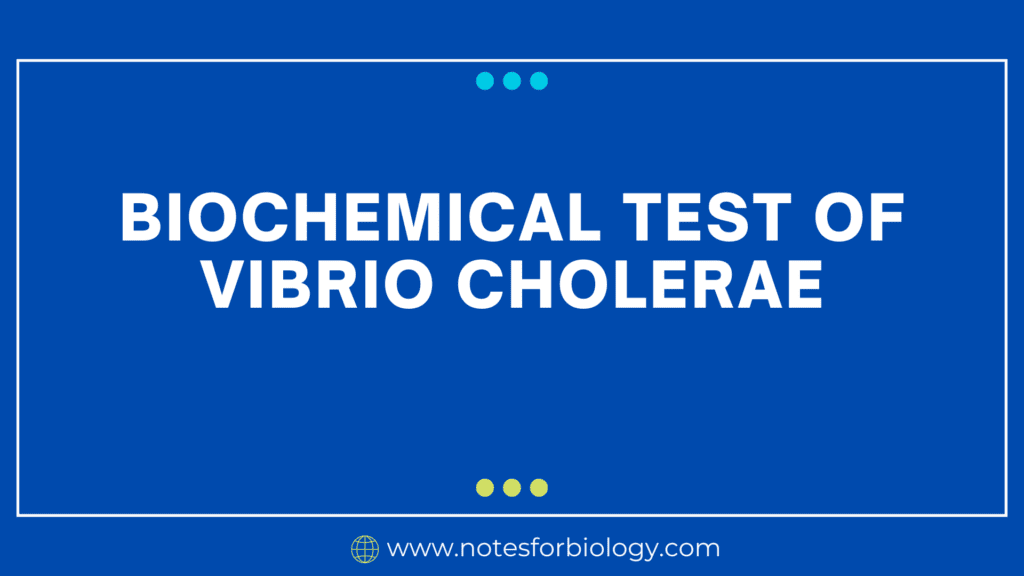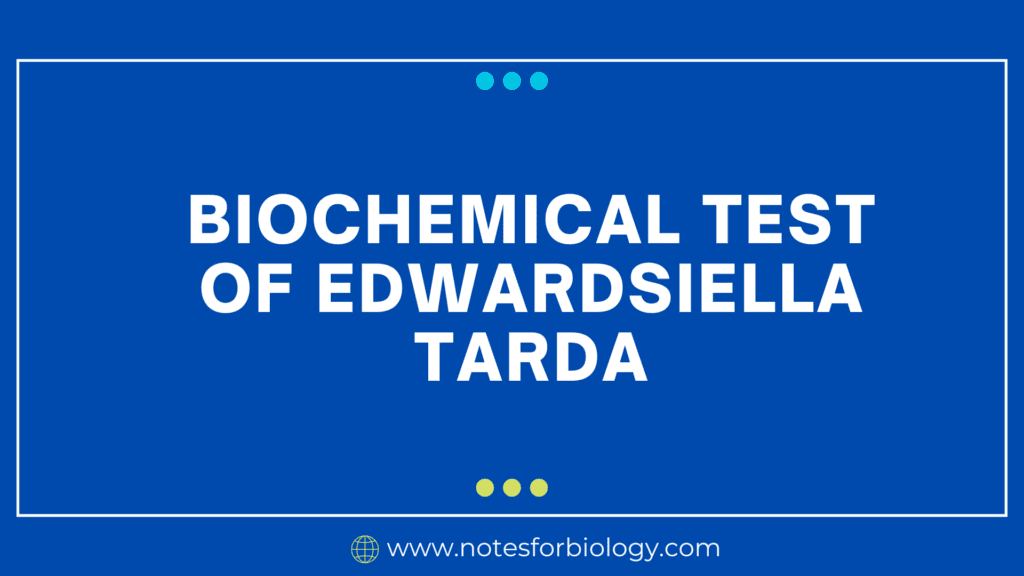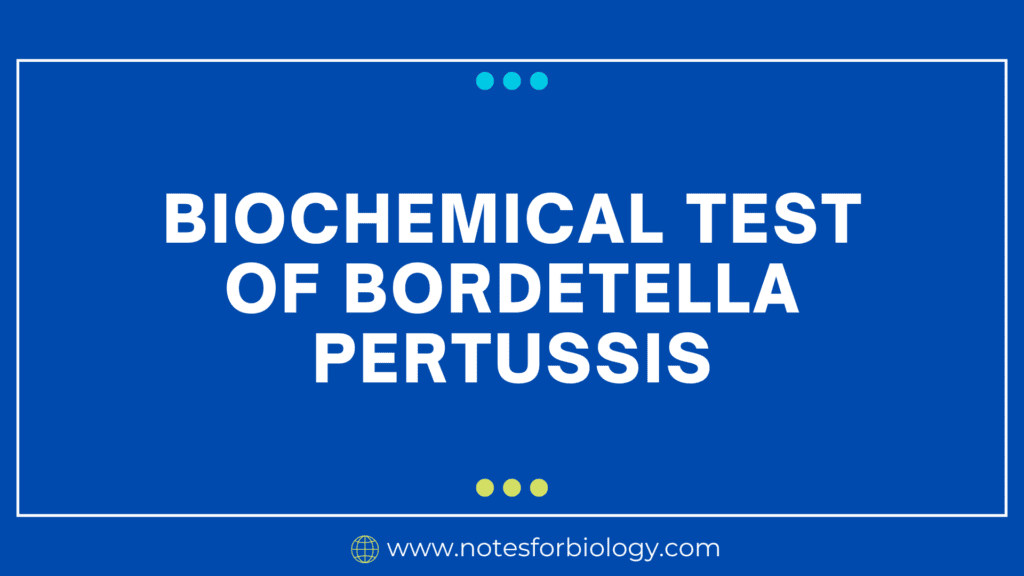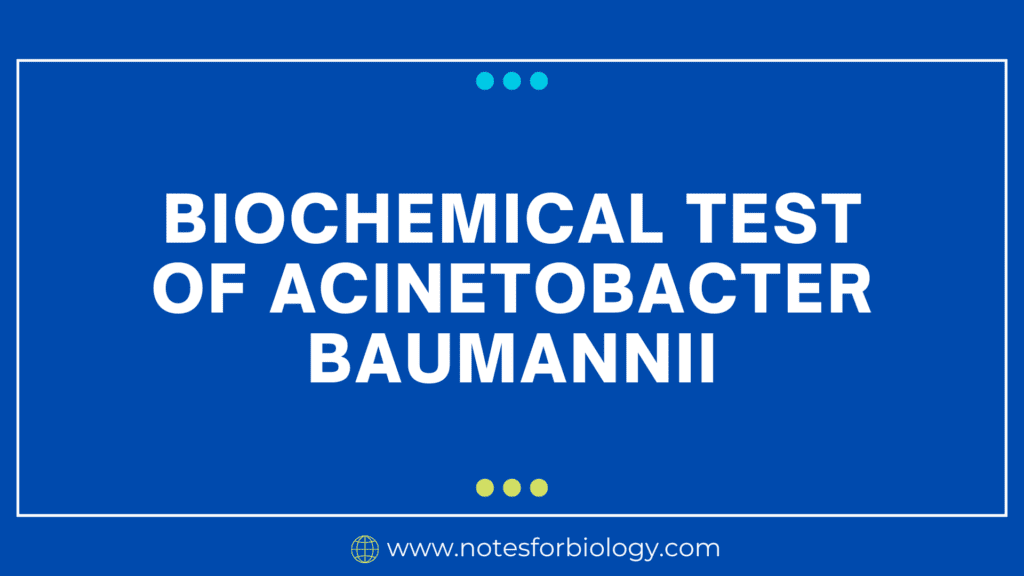Biochemical tests are vital for identifying and characterizing bacterial species such as Vibrio cholerae. It is a Gram-negative, comma-shaped bacterium that causes cholera, a serious diarrheal disease. It is commonly found in aquatic habitats such estuaries, rivers, and coastal waterways. The bacteria can infect humans by ingesting contaminated water or food.
Table of Contents
What is Vibrio cholerae ?
Vibrio cholerae is a Gram-negative, comma-shaped bacterium that causes cholera, a serious diarrheal disease. It is commonly found in aquatic habitats such estuaries, rivers, and coastal waterways. The bacteria can infect humans by ingesting contaminated water or food. It generates cholera toxin when consumed, causing the characteristic large watery diarrhea and, if left untreated, fast dehydration and death.
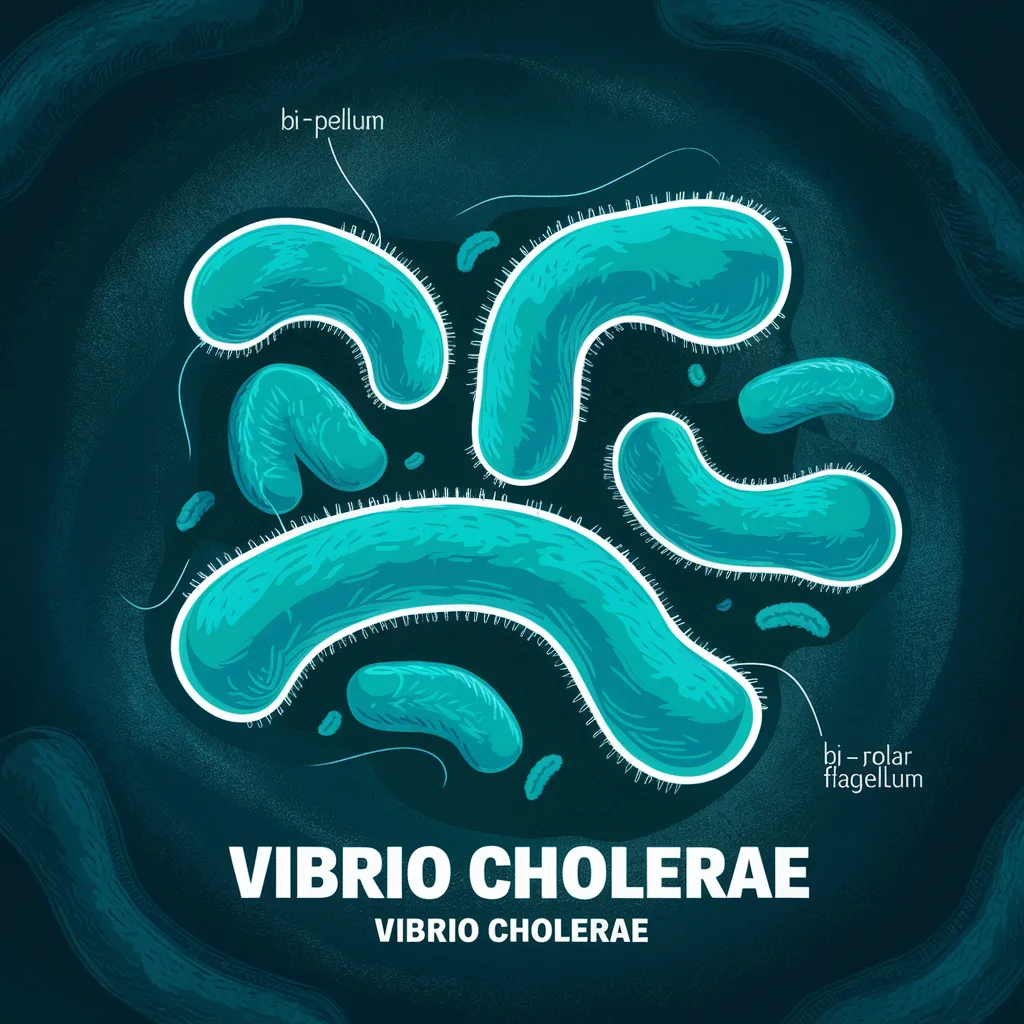
This is highly motile thanks to its polar flagellum, and it thrives in warm, alkaline, and salty environments. Effective cholera treatments include oral rehydration solutions and medicines, while preventive measures include appropriate sanitation and the use of cholera vaccinations.
Biochemical Test of Vibrio cholerae
1. Oxidase Test

Purpose
The goal is to detect the presence of the enzyme cytochrome c oxidase in bacteria.
Procedure:
Apply a drop of oxidase reagent (tetramethyl-p-phenylenediamine dihydrochloride) on filter paper or directly to bacterial colonies. If the colonies develop dark purple or blue within 10 to 30 seconds, the test is positive.
Result:
Positive, It generates the oxidase enzyme, which causes a purple color.
2. Sucrose Fermentation Test
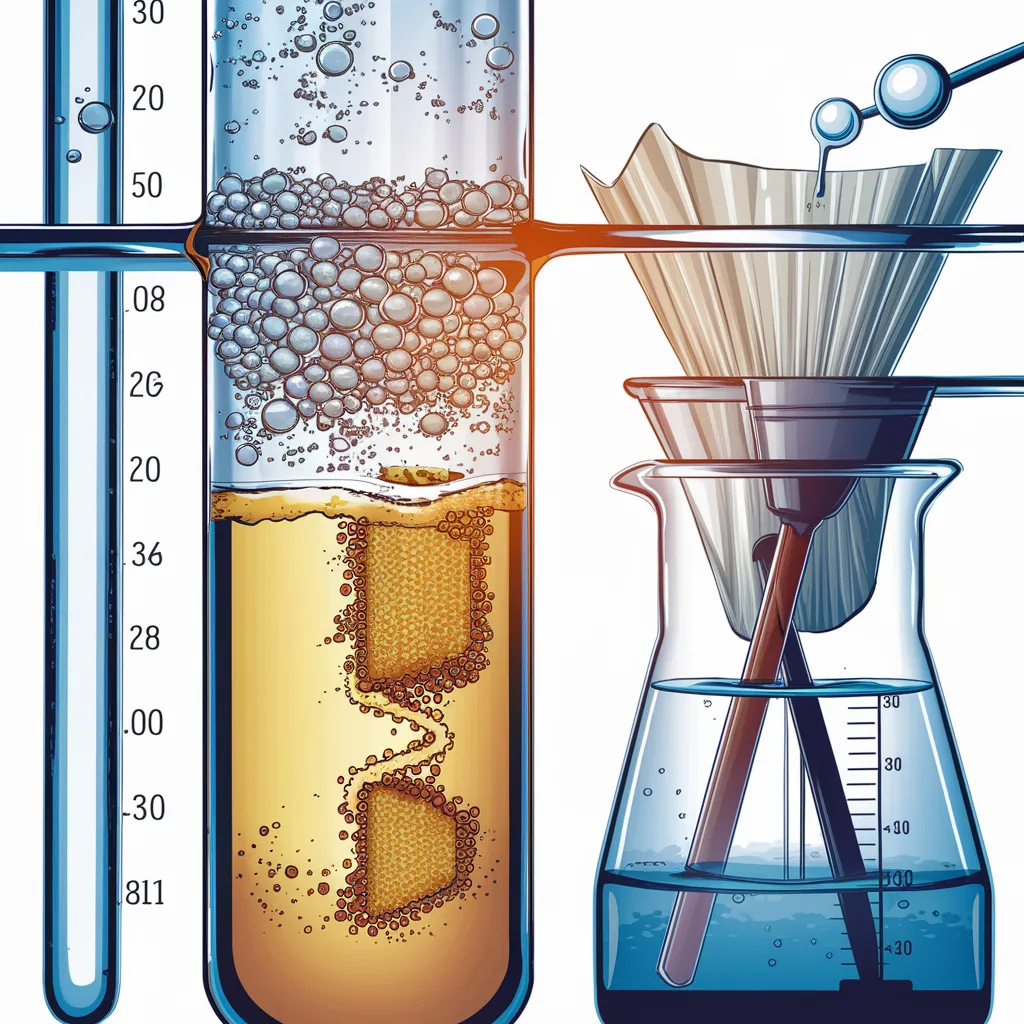
Purpose:
To test bacteria’s capacity to ferment sucrose and produce acid as an end product.
Procedure
Bacterial cultures are introduced into a medium containing sucrose and a pH indicator, such as phenol red. The medium is then incubated. If the bacteria ferment sucrose, acid is created, which lowers the pH and changes the color of the medium.
Result:
Positive, It ferments sucrose, producing acid and changing color (usually to yellow).
3. Growth in Alkaline Peptone Water (APW)
Purpose:
To promote the growth of Vibrio cholerae, which loves alkaline environments.
Procedure:
Bacterial samples are added to alkaline peptone water and cultured at 37°C for 6-8 hours. The presence of turbidity in the medium indicates growth.
Result:
Positive. Vibrio cholerae develops well in APW, as evidenced by increased turbidity.
4. String Test
Purpose:
To determine the mucoid nature of Vibrio cholerae colonies, which can form a “string” when raised with a loop.
Procedure:
A loop is used to touch and pull a colony from an agar plate. If a mucoid string develops, the test is positive.
Result:
Positive. Vibrio cholerae produces a mucoid string when lifted, indicating a positive string test.
5. Sucrose Fermentation Test
Purpose:
Determines bacteria’s capacity to ferment sucrose.
Procedure:
The bacterium is introduced into a mixture that contains sugar and a pH indicator. The fermentation of sucrose produces acid and changes the color of the medium.
Result:
Positive. Vibrio cholerae ferments sucrose, which produces acid and changes the color of the medium.
6. Growth in 1% Sodium Chloride (NaCl)
Purpose:
Vibrio cholerae tolerates high salt concentrations, hence growth at 1% NaCl is preferential for this species.
Procedure:
Incubate the bacterium in a medium containing 1% NaCl.
Result:
Positive growth was the end result. Vibrio cholerae thrives in the presence of 1% sodium chloride.
Frequently Asked Question(FAQ)
What is Vibrio cholerae ?
Vibrio cholerae is a Gram-negative, comma-shaped bacterium that causes cholera, a serious diarrheal disease. It is commonly found in aquatic habitats such estuaries, rivers, and coastal waterways. The bacteria can infect humans by ingesting contaminated water or food. It generates cholera toxin when consumed, causing the characteristic large watery diarrhea and, if left untreated, fast dehydration and death.
What are the Biochemical Test of Vibrio cholerae?
The Biochemical Test of Vibrio cholerae are:
1. Oxidase Test
2. Sucrose Fermentation Test
3. Growth in Alkaline Peptone Water (APW)
4. String Test
5. Sucrose Fermentation Test
Related Articles

